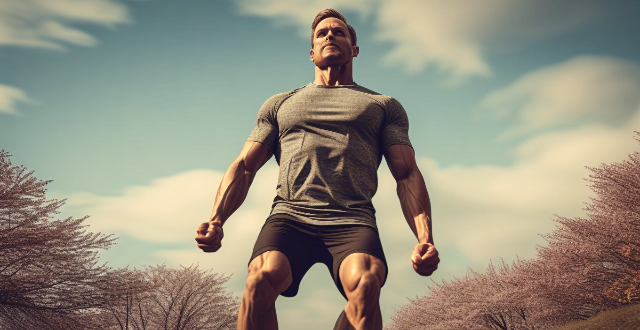Movement Health

How has the #MeToo movement impacted women's rights globally ?
The #MeToo movement has significantly influenced women's rights globally by encouraging survivors to share their experiences and creating a culture of support. This has led to increased reporting and accountability for perpetrators, as well as heightened awareness about the prevalence and severity of sexual harassment and assault. Many countries have also implemented laws and policies in response to the movement, such as stricter penalties for perpetrators and protections for survivors. However, there are still challenges and limitations to its effectiveness, including the reluctance of some survivors to share their stories publicly and the underreporting and underprosecution of other forms of gender-based violence. Overall, the #MeToo movement has had a significant impact on advancing women's rights, but more work is needed to ensure full progress.

How has the #MeToo movement influenced corporate culture and policies towards women ?
The #MeToo movement has had a profound impact on corporate culture and policies towards women. It has brought attention to the prevalence of sexual harassment and assault in the workplace, leading to increased awareness and action to address these issues. This movement has also influenced companies to adopt more inclusive and supportive policies for their female employees. One of the most significant impacts is the increased awareness and education about sexual harassment and assault in the workplace. Companies have recognized the need to educate their employees about what constitutes inappropriate behavior and how to report it. Many organizations have implemented mandatory training programs for all employees, including managers and executives, to ensure that everyone understands the company's policies and procedures regarding sexual harassment. The #MeToo movement has also led to changes in corporate culture, particularly in terms of creating a more inclusive and supportive environment for women. Companies are now placing a greater emphasis on diversity and inclusion initiatives, recognizing that a diverse workforce is not only ethical but also beneficial for business success. This includes implementing policies that promote equal pay, opportunities for advancement, and flexible work arrangements to accommodate the needs of working parents. Another key area where the #MeToo movement has influenced corporate culture is in improving reporting mechanisms for incidents of sexual harassment or assault. Companies are now taking steps to ensure that their employees feel comfortable coming forward with concerns and that they will be taken seriously. This includes establishing anonymous reporting channels, providing resources for support and counseling, and ensuring that investigations are conducted thoroughly and impartially. Many companies have adopted zero-tolerance policies towards sexual harassment and assault in response to the #MeToo movement. These policies clearly outline the consequences of engaging in such behavior, which can include termination of employment. By enforcing strict penalties for misconduct, companies aim to create a workplace culture where employees feel safe and respected. The #MeToo movement has also highlighted the importance of supporting victims of sexual harassment or assault. Companies are now offering more comprehensive resources for employees who have experienced such incidents, including access to counseling services, legal assistance, and job protection while they recover from the trauma. This support helps victims feel heard and validated, encouraging them to come forward and seek help when needed. In conclusion, the #MeToo movement has had a significant influence on corporate culture and policies towards women by increasing awareness and education about sexual harassment, promoting inclusivity and support, improving reporting mechanisms, adopting zero-tolerance policies, and providing support for victims. These changes demonstrate a commitment by companies to create a safer and more equitable workplace for all employees.

How do office layouts influence employee physical health and activity levels ?
This article explores the influence of office layouts on employee physical health and activity levels, discussing the benefits and drawbacks of open versus closed office designs, the importance of ergonomics in workstation design, and strategies for encouraging movement within the workplace. By considering these factors, employers can create environments that promote productivity while prioritizing employee well-being.

What are the most effective ways to incorporate movement into a busy work schedule ?
Incorporating movement into a busy work schedule is crucial for maintaining physical and mental well-being. Here are some effective ways to add movement to your day: 1. Start with small changes like taking frequent breaks, walking meetings, and using the stairs. 2. Incorporate exercise into your commute by cycling or walking to work, or getting off public transportation early and walking the rest of the way. 3. Make the most of lunch breaks by doing physical activities like going for a walk or joining a fitness class. 4. Invest in office ergonomics such as standing desks or treadmill desks. 5. Set reminders and goals using activity trackers or calendar blocking. 6. Engage in leisure activities that involve movement, such as hobbies or social activities with friends or family. By prioritizing physical activity and making it a part of your daily routine, you can improve your health, boost your productivity, and enhance your overall well-being.

How does a sedentary lifestyle affect job productivity and overall health ?
This article discusses the negative impacts of a sedentary lifestyle on job productivity and overall health. It outlines how prolonged periods of sitting can lead to decreased energy levels, impaired cognitive function, and increased stress and anxiety in the workplace. It also highlights the increased risk of chronic diseases such as heart disease, diabetes, and obesity, as well as musculoskeletal issues and poor mental health associated with a sedentary lifestyle. The article concludes by emphasizing the importance of incorporating regular physical activity into daily routines and maintaining a healthy work-life balance to improve job performance and overall well-being.

How does hydration impact athletic performance and health ?
Hydration is crucial for athletic performance and health. Adequate hydration maintains energy levels, muscle function, joint lubrication, heart rate, and cognitive function during exercise. Dehydration can lead to fatigue, muscle cramping, increased heart rate, impaired cognitive abilities, and decreased physical performance. Proper hydration also aids digestion, kidney function, skin health, immune system function, and body temperature regulation. Chronic dehydration can increase the risk of kidney stones, digestive issues, weakened immune system, and other health problems. Therefore, it is essential for athletes to stay well-hydrated to achieve optimal performance levels and support their overall health.

How has the #MeToo movement influenced perceptions of female leadership ?
The #MeToo movement has increased awareness of gender bias and prompted changes in corporate culture, leading to greater representation of women in leadership roles. However, challenges remain in achieving true gender equality.

What are the best exercises for improving mental health ?
Engaging in regular physical activities is crucial for maintaining good mental health. Some of the best exercises for improving mental health include cardiovascular exercises like running, cycling, and swimming; strength training exercises like weightlifting, resistance bands, and bodyweight exercises; and yoga and meditation practices like Hatha yoga, mindfulness meditation, and Tai Chi. By incorporating these exercises into your routine, you can reduce stress and anxiety levels while also improving overall well-being.

How accurate is the heart rate monitor on the Apple Watch ?
The Apple Watch's heart rate monitor is generally accurate but can be affected by factors like movement, fit, skin type, and temperature. It's recommended to ensure proper fit and minimize movement for the most accurate results.

How do force vectors influence an athlete's movement in sports biomechanics ?
Force vectors play a crucial role in sports biomechanics. The magnitude and direction of force vectors determine an athlete's acceleration, deceleration, and direction of motion. There are several types of force vectors, including internal, external, contact, frictional, and elastic forces. Understanding how these force vectors influence an athlete's movement is essential for improving performance and preventing injuries in sports. Coaches and athletes can use this knowledge to optimize their training programs and techniques.

Is high-intensity interval training (HIIT) more effective for mental health than steady-state cardio ?
This article explores whether high-intensity interval training (HIIT) is more effective for mental health than steady-state cardio. HIIT involves short bursts of intense activity followed by periods of rest or low-intensity activity, while steady-state cardio involves maintaining a consistent level of activity for an extended period. Both types of exercise offer benefits for mental health, such as improved mood, reduced anxiety and stress, increased self-efficacy, relaxation, and social opportunities. However, they may appeal to different individuals based on their preferences and goals. Incorporating both types of exercise into a regular routine can provide the most comprehensive benefits for mental health.

How does vaccine distribution affect public health ?
Vaccine distribution is crucial for global health, reducing disease incidence and healthcare costs while increasing productivity. Challenges include inequitable access, logistical complexities, and public perception issues.

How does climate change influence the movement of people from rural to urban areas ?
Climate change significantly impacts human migration patterns, particularly the movement from rural to urban areas. This trend is influenced by direct effects like extreme weather events and changes in agricultural conditions, as well as indirect factors such as economic downturns in rural sectors and social considerations. To reduce rural-to-urban migration driven by climate change, adaptation strategies are needed to enhance resilience in rural areas through sustainable agriculture practices, infrastructure development, economic diversification, and community support programs.

How does a balanced diet impact women's bone health ?
Balanced diet is crucial for women's bone health, including preventing osteoporosis. Key nutrients are calcium, vitamin D, protein, and phosphorus. Fruits and vegetables also support overall well-being.

What is the role of the World Health Organization (WHO) in promoting global health ?
The World Health Organization (WHO) plays a crucialThe World Health Organization (WHO) plays a crucial by providing leadership, setting norm WHO's work is focused on improving health outcomes worldwide through various activities such as convening stakeholders, establishing international standards for health, generating scientific knowledge to inform policy decisions, providing technical support to countries, and monitoring global health trends.

How can parents incorporate physical activity into their homeschooling routine ?
Incorporating physical activity into a homeschooling routine is crucial for a child's development, as it enhances cognitive abilities, improves mood, and fosters social skills. Parents can achieve this by scheduling regular exercise time, integrating movement into learning, involving outdoor activities, making physical activity fun, setting an example, and using technology. Starting the day with exercise, taking breaks for physical activity, teaching concepts through movement, combining art with movement, planning nature walks or hikes, assigning gardening tasks or outdoor chores, playing games, hosting dance parties, participating in physical activities alongside the child, enrolling the child in online fitness classes or following workout videos, and allowing the child to play active video games are some effective ways to incorporate physical activity into the homeschooling routine.

How can countries improve their preparedness for global health emergencies ?
Countries can improve their preparedness for global health emergencies by strengthening healthcare infrastructure, developing surveillance and early warning systems, enhancing international cooperation, improving public health education and awareness, and establishing contingency plans and policies.

What are the long-term health consequences of climate change ?
The long-term health consequences of climate change are multifaceted and can be categorized into several key areas, including increased frequency and severity of heat waves, extreme weather events, spread of diseases, air quality issues, food insecurity, and mental health impacts. These effects have far-reaching implications for public health and require urgent action to mitigate their impact.

How have historical female figures influenced modern-day feminism and women's rights movements ?
This article explores how historical female figures have influenced modern-day feminism and women's rights movements. It discusses early pioneers like suffragettes and abolitionists, civil rights era figures such as Rosa Parks and Coretta Scott King, second-wave feminists including Betty Friedan and Gloria Steinem, and modern-day feminists like Malala Yousafzai and the #MeToo movement. These individuals have played crucial roles in shaping the course of feminism and women's rights movements, paving the way for future generations to fight for equality and justice.

Why is vaccine equity important for global health ?
Vaccine equity is crucial for global health as it ensures fair distribution of life-saving vaccines worldwide. It helps prevent disease outbreaks, reduce health inequalities, promote economic stability, and improve overall health outcomes. By ensuring everyone has access to vaccines, we can create a healthier world for all.

How does understanding joint mechanics contribute to improving athletic performance through sports biomechanics ?
Understanding joint mechanics is crucial for improving athletic performance in sports biomechanics. By optimizing movement patterns, preventing injuries, enhancing force production, and improving stability, athletes can achieve greater success in their chosen sports. Sports biomechanists analyze an athlete's joint mechanics to develop targeted training programs that improve joint function and overall performance. Advances in sports technology provide real-time feedback on joint mechanics during training and competition, allowing athletes to fine-tune their technique and make adjustments to their training program as needed.